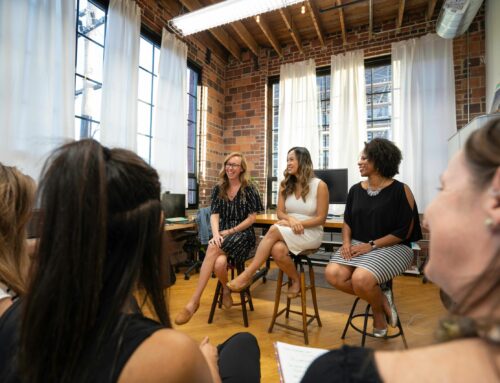As a private school administrator, you wear a lot of hats every day on the job. Depending on your specific role and the size of your school, on any given day you may have to focus on:
- board relations
- fundraising
- financial planning
- marketing
- communications and public relations
- human resources
- food services
- transportation issues
- security challenges
- construction projects
- extracurricular events
- curriculum development and teacher training
Or all of the above!
More than anything, however, it’s your responsibility to make sure that your students have the best learning environment possible. And a huge part of this is setting the stage so that your teachers are up-to-speed on motivating their students to become active learners and own their own learning.
While there are many strategies to help students participate in their education, here are five ideas that take it to the next level and equip students to actively process, retain, and integrate knowledge—not only in the classroom setting but for the rest of their lives.
Exercise 1: IQ cards
One of the best ways that students can actively reflect on topics at the end of a lesson is with Insight (I) and Question (Q) cards.
Here’s how it works. Have each student write down one new and important insight they gained or lingering question they have from the lesson on an index card. Without putting their names on the cards, have them stand in a circle and pass the cards to the right one-by-one and read what their classmates shared until their card comes back to them. Then, have them take a few minutes to write down any new insights or questions they have after reading their classmates’ cards and write their names on their card before the teacher collects them.
What’s the payoff for this exercise? Your students can gain insights through facts, big ideas summaries, impact from events studies, or emotions associated with the topic. IQ cards help students formulate the big takeaway at the end of each lesson and put questions on the table for future exploration.
Exercise 2: One-word summaries
When time is short, teachers can have students write down a one-word answer that summarizes a lesson and then hold it up for everyone to see. Each student then calls out their answer and as a group the class proceeds to connect the words into sentences that capture the bigger ideas presented in the lesson. By working together as a group to process information and integrate it into a broader knowledge base, students will learn teamwork skills and build on each other’s insights.
Exercise 3: “What it’s really about” carousel
For cultivate higher-order thinking, have students go through a Socratic-method exercise in which each gets a sheet of paper with three sections on it.
In the first section, the students write down what they think the subject is about. Answers can focus on why something happened, why the author wrote about it, implications, impacts, or purposes. Once the responses are recorded, students pass their papers to the person on their right, who writes their name in the second box and digs deeper by answering the second question, “Ok, but what’s it really about?” This student then passes the paper to the right one more time to the third person, who writes their name in the third box and offers any final insights before returning to the original owner.
This three-round carousel helps students more deeply reflect on their insights about a particular topic in the context of differing viewpoints that may challenge their initial conclusions and add layers of texture to the ideas being taught.
Exercise 4: The three sentence wrap-up
At the end of each lesson, have students write a concise three-sentence analysis of the most important thing they need to remember about what was taught. Not only does this wrap-up help students efficiently master content for exams, it’s a skill that will serve them well throughout life in a variety of contexts. As a bonus, have students refine their summaries by sharing them with their peers in small groups.
Exercise 5: List, group, label
At the end of a unit, have students individually write down or sketch every concept they can think of from the topics covered in the unit. Then have them get together in groups of three or four and pick a scribe who will consolidate their thoughts onto a group chart that’s big enough to hold up and share with the whole class. Colored markers are then used to consolidate related words into concepts and show links between concepts and broader categories of themes and ideas.
Next, have each group share its chart with the whole class and post on the wall so that all the charts can be considered together to see if there is any important information that’s missing. By listing, grouping, and labeling knowledge gleaned at the individual, group, and class-wide levels, students will gain a more comprehensive understanding of how each discrete topic presented fits into the unit as a whole—helping them retain what they’ve learned well beyond their exams.
Wrapping up
The common thread that runs through these five ideas is the amplification of learning from the individual student to the small group level and then to the class as a whole. Teaching students to share their classroom insights with their peers not only builds confidence but creates a level of accountability that encourages teamwork and participation on projects to produce group outcomes—skills they’ll need when they become adults and enter the working world.
Even better, students learn to take ownership of their education by routinely applying these exercises to a variety of situations—further reinforcing the motivation to become lifelong learners. For private school administrators, encouraging your students to actively participate in their own learning is by far the best gift you can give.








great motivational post